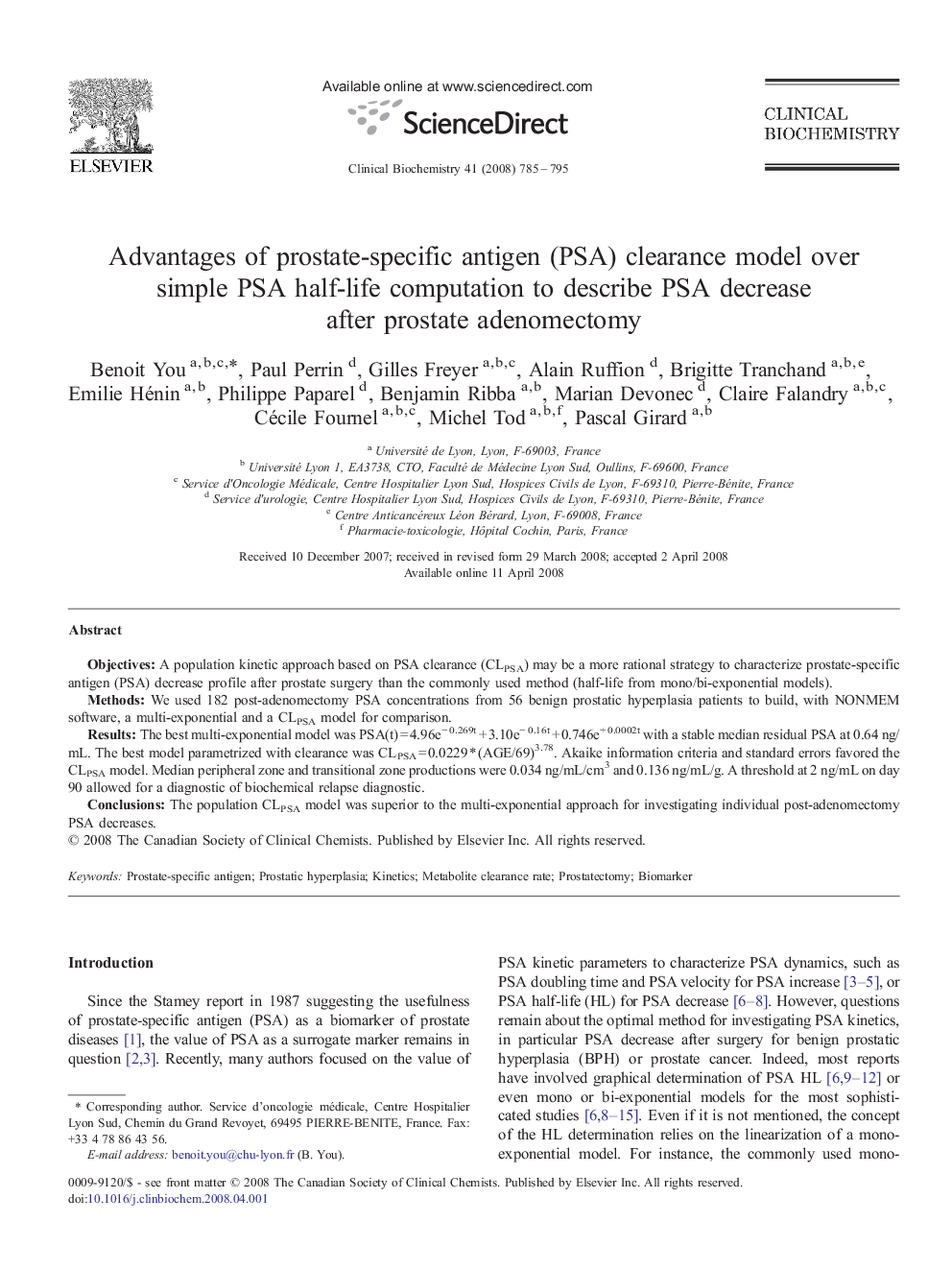| Article ID | Journal | Published Year | Pages | File Type |
|---|---|---|---|---|
| 1971492 | Clinical Biochemistry | 2008 | 11 Pages |
ObjectivesA population kinetic approach based on PSA clearance (CLPSA) may be a more rational strategy to characterize prostate-specific antigen (PSA) decrease profile after prostate surgery than the commonly used method (half-life from mono/bi-exponential models).MethodsWe used 182 post-adenomectomy PSA concentrations from 56 benign prostatic hyperplasia patients to build, with NONMEM software, a multi-exponential and a CLPSA model for comparison.ResultsThe best multi-exponential model was PSA(t) = 4.96e− 0.269t + 3.10e− 0.16t + 0.746e+ 0.0002t with a stable median residual PSA at 0.64 ng/mL. The best model parametrized with clearance was CLPSA = 0.0229 ⁎ (AGE/69)3.78. Akaike information criteria and standard errors favored the CLPSA model. Median peripheral zone and transitional zone productions were 0.034 ng/mL/cm3 and 0.136 ng/mL/g. A threshold at 2 ng/mL on day 90 allowed for a diagnostic of biochemical relapse diagnostic.ConclusionsThe population CLPSA model was superior to the multi-exponential approach for investigating individual post-adenomectomy PSA decreases.
